Dental Services
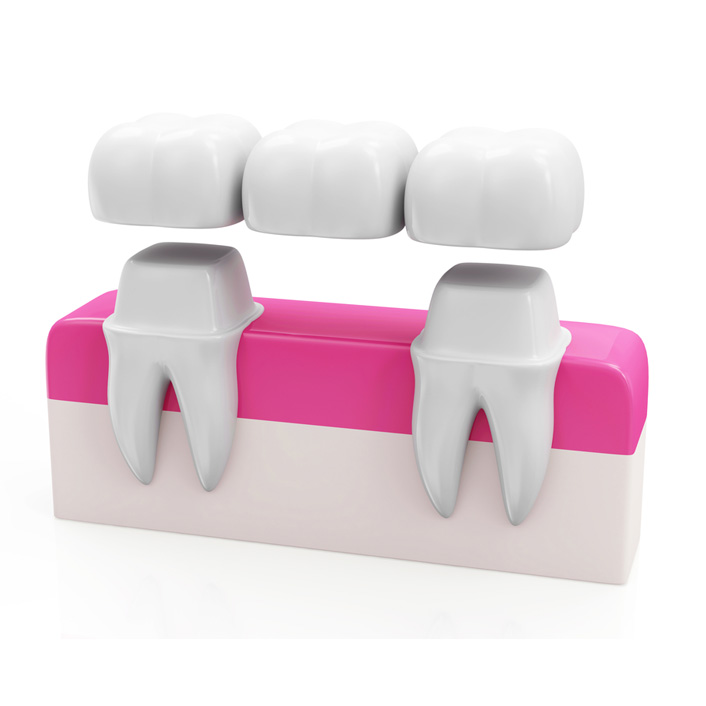
Dental Bridges
A bridge is an ideal method to fill the space created by missing teeth. A bridge is one or more artificial teeth that are cemented into place using the real teeth on either side for support--hence the name. Bridges are a perfect option for filling the space created by a missing tooth. A bridge replaces the missing tooth both functionally and cosmetically. Bridge work is as much an art as it is an exact science. Bridge materials include gold alloys, porcelain bonded to metal alloy, or all-ceramic material made to match your natural tooth color. The choice of material depends on requirements for strength, wear, and/or aesthetics.
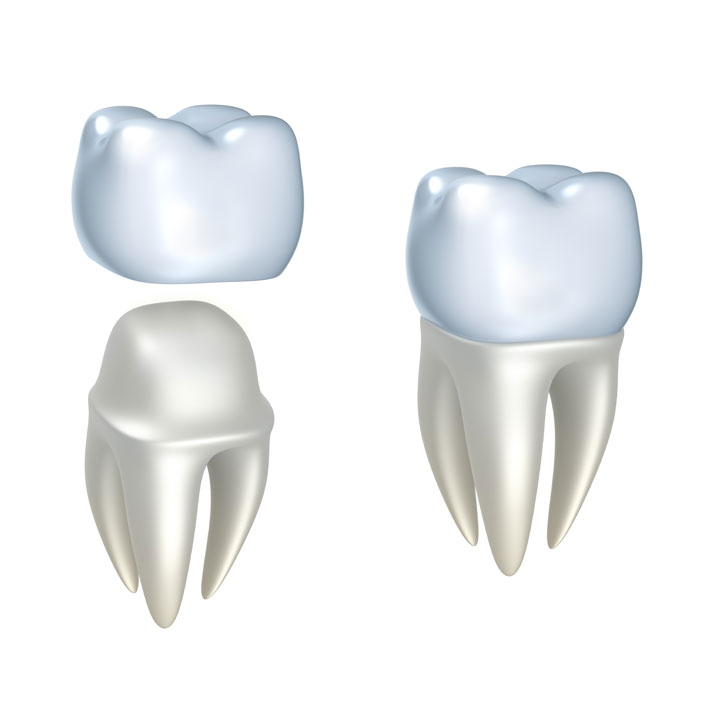
Crowns
Crowns are used to restore and enhance teeth that are damaged, or to replace missing teeth. A crown, also called a cap, is used to entirely cover a damaged tooth. A crown not only strengthens the tooth, but it can also dramatically improve the tooth's appearance, shape and alignment.
Crowns may be used to…
- Replace a large filling when there is little tooth structure remaining
- Protect a weak tooth from fracturing
- Restore a fractured tooth
- Attach a bridge
- Cover a dental implant
- Cover a discolored or poorly-shaped tooth
- Cover a tooth that has had root canal treatment

Oral Cancer Screening
We have a genuine concern for your overall health and well-being. It’s because of this that we invest in state-of-the-art oral cancer screening technology to ensure your health for life.
Did you know that in the United States, one person dies every hour from oral cancer? Oral cancer has a cure rate of more than 80 percent—if it is detected and treated early. The mortality rates are high because diagnoses come too late. Very few patients are properly screened by their dentists. At our practice, we perform an oral cancer screening with every exam. We utilize an advanced cancer screening technology so that we can detect problems early on. Five minutes could save your health. It could save your life.
Symptoms include:
- Unexplained bleeding
- Numbness, loss of feeling, or pain in sections of the mouth
- Difficulty chewing or swallowing
- Ear pain
- Persistent sore throat
- Development of white, red or speckled patches in the mouth
- Swelling, thickening, lumps, bumps, rough patches and growths
Oral cancer typically affects:
- Front 2/3 of the tongue
- Lining of the cheeks and lips
- Floor of mouth under the tongue
- Roof of the mouth
- Gums
- Small area behind the wisdom teeth
- Minor salivary glands
Although these areas are visible to the doctor during examinations, we need a more thorough look to be able to detect the beginnings of abnormalities.
Oral cancer is typically treated first with surgery and also with the help of oncologists. Each case varies. If you are experiencing any of the above symptoms, please call our office to schedule a screening and consultation.
We hope to catch things before they become a real problem, and we need your help! Be sure to come in for every 6-month checkup for preventive care. Especially in the case of oral cancer, prevention is your best option.
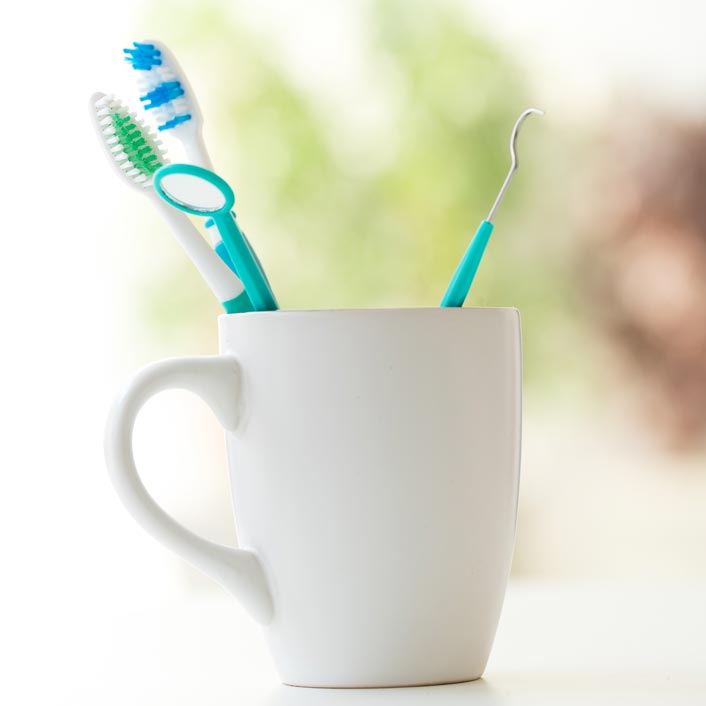
Dental Cleaning
A dental cleaning is a professional cleaning you receive from a dentist or dental hygienist. Most dental cleanings take only 25 to 30 minutes. Cleanings should be performed every six months to prevent excessive plaque buildup. Plaque left untreated can lead to unhealthy gums and tooth decay. A routine dental cleaning should include scaling, root planing and polishing.
Scaling and root planing is the process of removing plaque and tartar from all tooth surfaces with a variety of methods, depending on the amount of plaque and tartar. Dental hygienists traditionally perform scaling by hand. However, new and advanced technology has led to more modern methods such as electric scalers. This sophisticated tool allows dental cleanings to be performed more efficiently and in less time. Both electric and manual scaling methods can be combined to achieve the best results. Polishing completes the cleaning, making the surface of the teeth smooth and minimizing future plaque build-up.
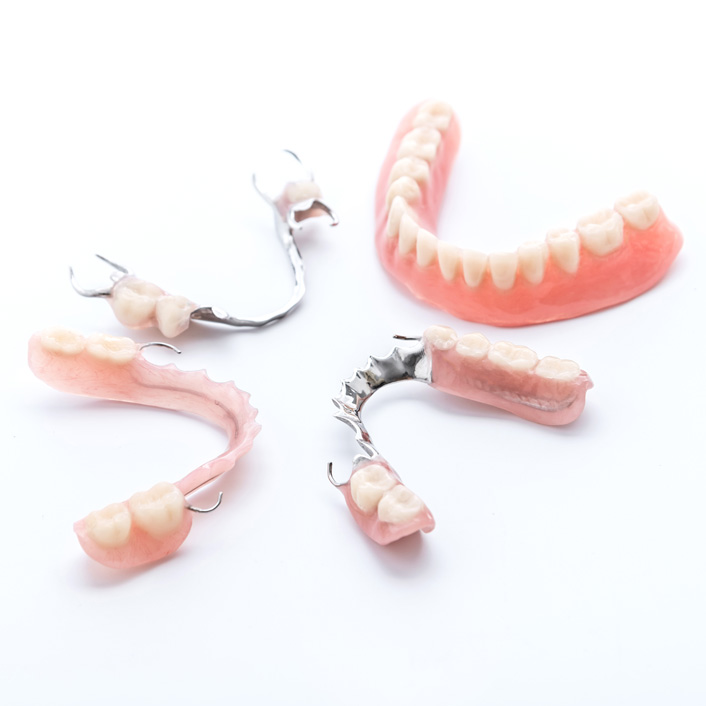
Denture
A denture is a removable replacement for missing teeth and surrounding tissues. There are two types of dentures available: partial dentures and complete dentures. Partial dentures are used when some natural teeth remain and complete dentures are used to replace all teeth. Dentures are made to resemble your natural teeth, so there should be no noticeable change to appearance. In fact, dentures may even improve a smile!
Complete Dentures – This restoration method is used to restore smile and mouth function if all teeth have been lost. The dentures are custom created and natural looking. They are fit in the patient’s mouth to take the place of the original teeth. Complete dentures are generally removable and may require adjustments in order to create a proper fit with the gums and mouth.
Partial Dentures – A removable partial denture is used when one or more natural teeth still remain in the upper or lower jaw. Made of replacement teeth attached to a pink or gum-colored plastic base, partials help restore better functionality to the mouth. As with complete dentures, it is possible to have more permanent option cemented into place.

Emergency Exam
Dental emergency? We’re here for you!
Sever pain or discomfort in the jaw, gums or teeth can often become unbearable. At Nutley Family Dentistry we offer same-day emergency dental services and appointments to provide immediate relief and long term dental solutions!
If you are suffering from severe pain or discomfort don’t hesitate to call us at (973) 235-9440! Our accommodating team will help you schedule an emergency exam as soon as possible. We’re here to help!
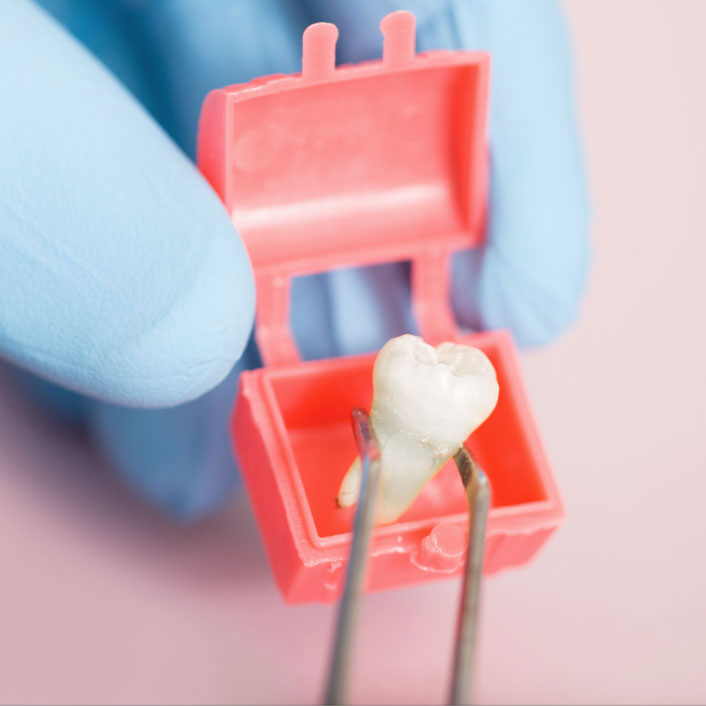
Extractions
Good oral hygiene is a must. The loss of a single tooth can have major impact on overall oral health and appearance. Although dentists will use every measure to prevent tooth loss, there are still some occasions when a tooth needs to be extracted. A tooth may need to be extracted if the following occurs:
- Severe decay
- Advanced gum disease
- Infection or abscess
- Orthodontic correction
- Malpositioned teeth
- Fractured teeth or roots
- Impacted teeth
The dentist may suggest an extraction after careful examination and treatment. X-rays are used to understand the shape and position of the tooth and surrounding bone before extracting the tooth. Based on the degree of difficulty, a dentist may refer you to an oral surgeon.
A certain amount of pain and discomfort is to be expected following an extraction, but it can be minimized with painkillers and ice packs applied to the face for 15 minutes at a time. Discomfort should lessen within three days to two weeks.
If you experience prolonged or severe pain, swelling, bleeding or fever, call our office immediately.
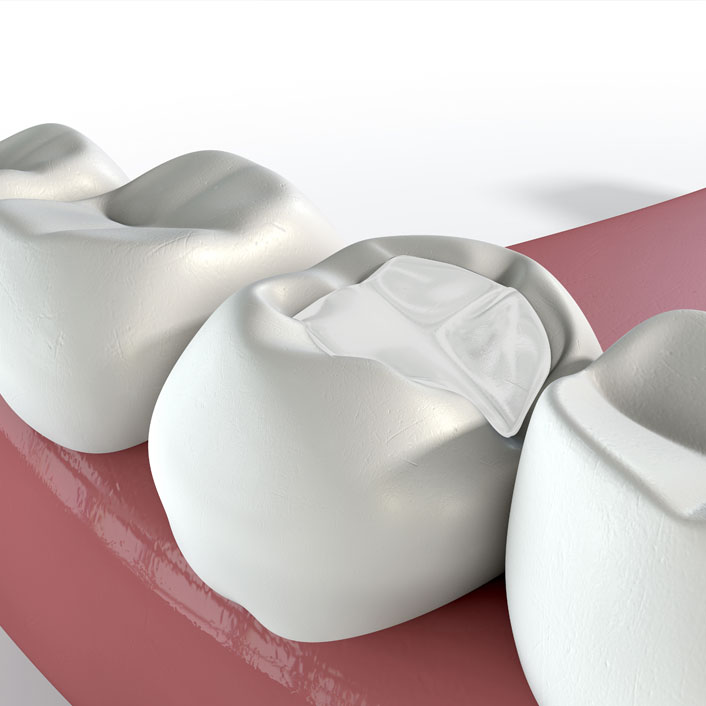
Fillings
A filling is a way to restore a tooth decayed tooth back to its normal shape and function. If you have a tooth that requires a filling, the dentist will first remove the decayed tooth material, then clean the affected area and fill the cleaned-out cavity with a filling material. This filling will help prevent further decay by closing off any cracks or spaces where bacteria might enter. There are a variety of filling materials available including gold, silver, plastic and porcelain. We will work with you to determine which material is best for you, depending on the extent of repair, the location of the filling and the cost. Each of the filling materials is briefly explained below:
Gold fillings are custom-made in a laboratory and then cemented into place. While gold fillings are often the most expensive choice, many consider gold as the best filling material. Gold inlays are well-tolerated by gum tissues and may last more than 20 years.
Amalgam (silver) fillings are a more inexpensive choice and are also well-tolerated. However, due to their dark color, they are more noticeable than porcelain or composite restorations and are not recommended for fillings in very visible areas such as front teeth.
Composite (plastic) resin fillings are custom-made to the exact color of the patient’s teeth, creating a more natural appearance. While these white fillings may be less noticeable than other materials, they usually only last between 3 and 10 years. They may not be ideal for larger fillings as they may chip or wear over time. They can also become stained from coffee, tea or tobacco.
Porcelain fillings, called inlays or onlays, are created in a lab and then bonded to the tooth. They can be matched to the color of the tooth, they resist staining, and they cost about the same as gold fillings. A porcelain restoration generally covers most of the tooth, making the filling nearly undetectable.
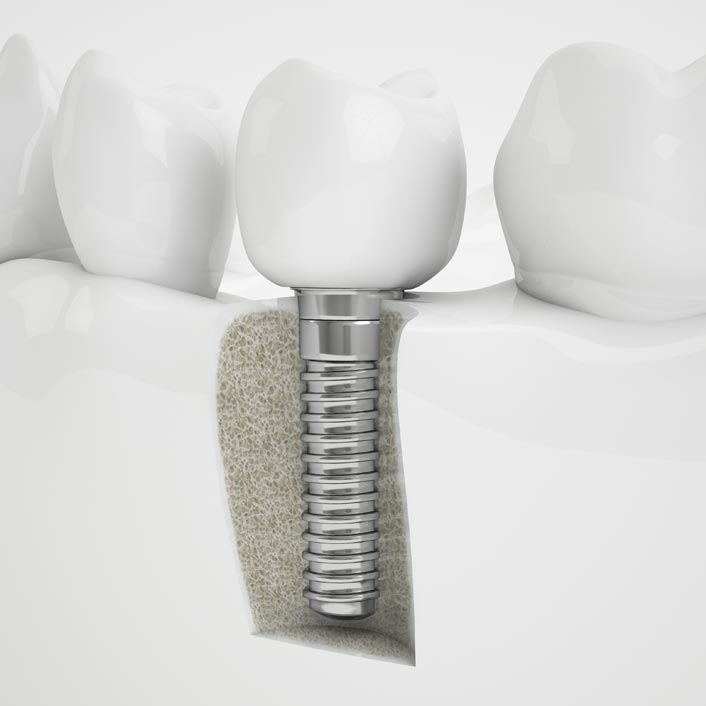
Implant Restoration
A dental implant is an ideal tooth restoration for people who are missing one or more teeth for reasons like injury or periodontal disease. After a metal post is placed, the restoration is completed with a replacement crown.
While implants are typically more expensive than other methods of tooth replacement, they provide superior benefits. Implants are stronger than natural teeth and generally last 10-20 years. They are also a more favorable approach than bridgework, because they do not depend on neighboring teeth for support.
Implants require healthy gums and adequate bone. A patient must also be committed to excellent oral hygiene and regular dental visits, as these are critical to the long-term success of dental implants.
Please let us know if you have any questions about the procedures involved in dental implants.
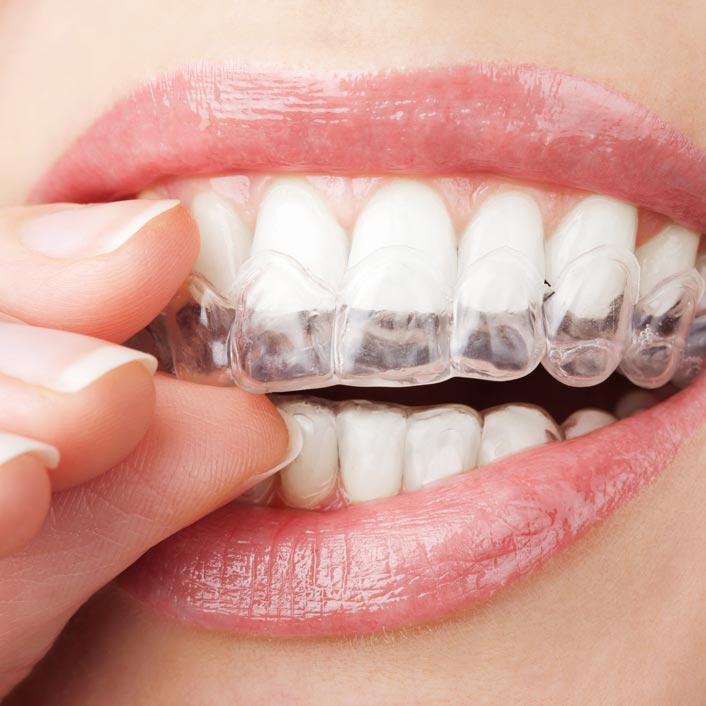
Invisalign
Invisalign is an attractive alternative to traditional metal braces. It is a series of clear, custom-fit removable mouth trays that apply a controlled amount of force to your teeth to slowly straighten them. The system provides the same beautiful results as traditional braces, but they are virtually invisible. Because Invisalign trays are removable, they can be taken out while eating, drinking, brushing and flossing.
The Invisalign system begins in the dentist or orthodontist’s office with taking molds to design a your trays. Patients switch trays every two weeks to gradually shift the teeth. The system requires a visit to the office every six weeks so that treatment can be monitored. Once treatment is complete, a patient will likely be given a retainer to maintain the smile.The cost of Invisalign varies according to the complexity of the case. Insurance policies generally cover Invisalign to the same extent that they cover traditional braces.
Contact us for an Invisalign consultation.
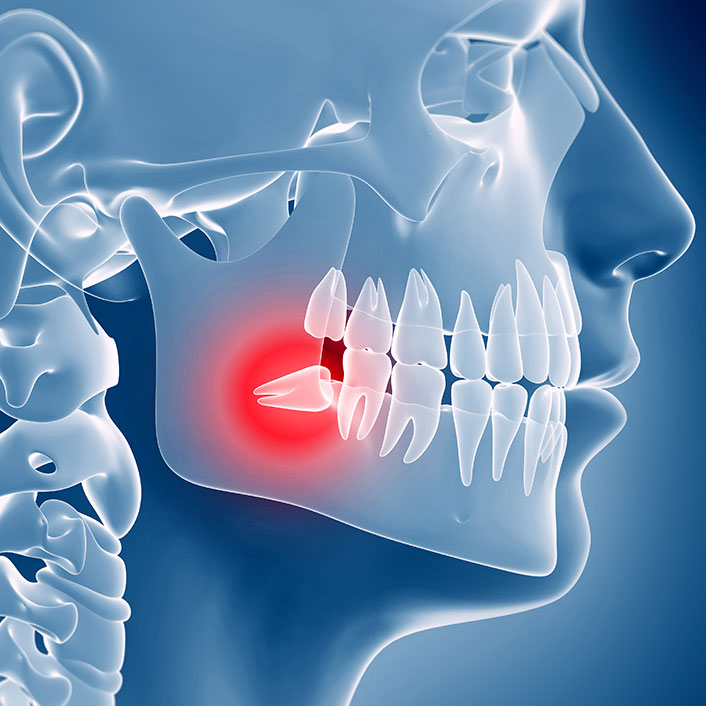
TMJ Treatment
TMJ stands for temporomandibular joint and is used to describe dysfunction or disorders related to the joint. “Temporo,” refers to the temple area of the skull; “mandibular,” refers to the lower jaw; and “joint” is essentially where the head and jaw meet. Problems in this joint may be caused by a trauma, misalignment of the teeth, or excess muscle tension. The two bones that meet at the jaw are buffered by cartilage and five different muscles, so TMJ can cause a variety of troubles.
Common TMJ symptoms:
- Headaches
- Earaches
- Trouble/soreness in opening and closing the mouth
- Clicking or popping of the jaw
- Pain in the jaw muscles
- Soreness in the area, sometimes extending to the face
Dental treatments for the condition can include replacing missing teeth, moving teeth, adjusting the bite, filling gaps between teeth, and more. There is no one solution that is right for all cases. Sometimes a plastic mouthpiece is used to prevent clenching or grinding that is contributing to the problem. If TMJ is left untreated and reaches extremes, surgery may be required to repair the badly damaged joint.
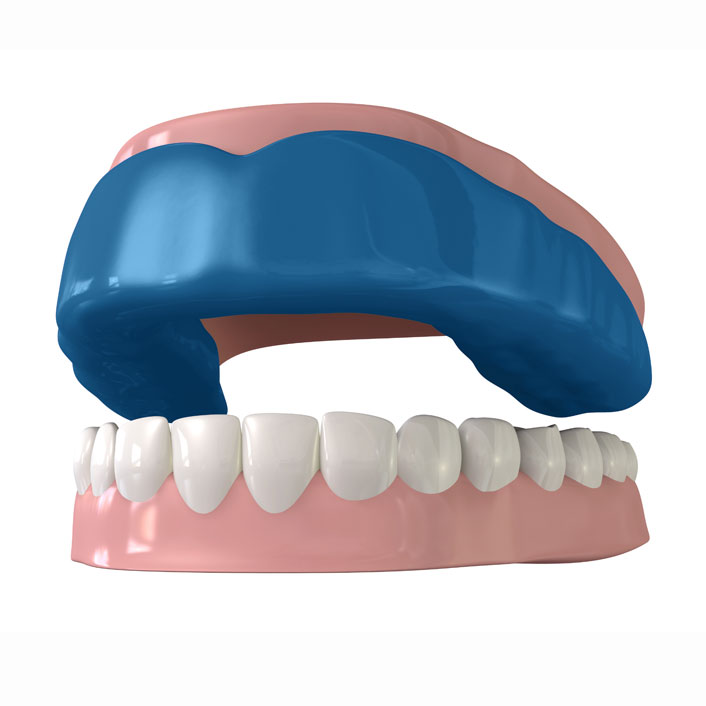
Mouth Guard
Custom-designed mouth guards are made of durable plastic and molded to fit the shape of your teeth. Mouth guards are recommended to protect the jaw, tongue, cheek lining and teeth during physical activity and sports such as lacrosse, football, basketball, boxing or other activities where your mouth might get hit. Depending on growth and activity level mouth-guards generally last between 2-10 years, and can help prevent broken teeth and serious injuries such as concussion.
Custom-made oral appliances can also be used as part of treatment for conditions like sleep apnea and TMJ disorders. In general, plastic appliances can be used to correct a variety of problems.
If you are active in athletics or experiencing any concerning experiences with your mouth, teeth, or jaw, please let us know. If any kind of guard or appliance is a good option for you, we will take an impression of your teeth to create a custom-fit product for your specific needs.
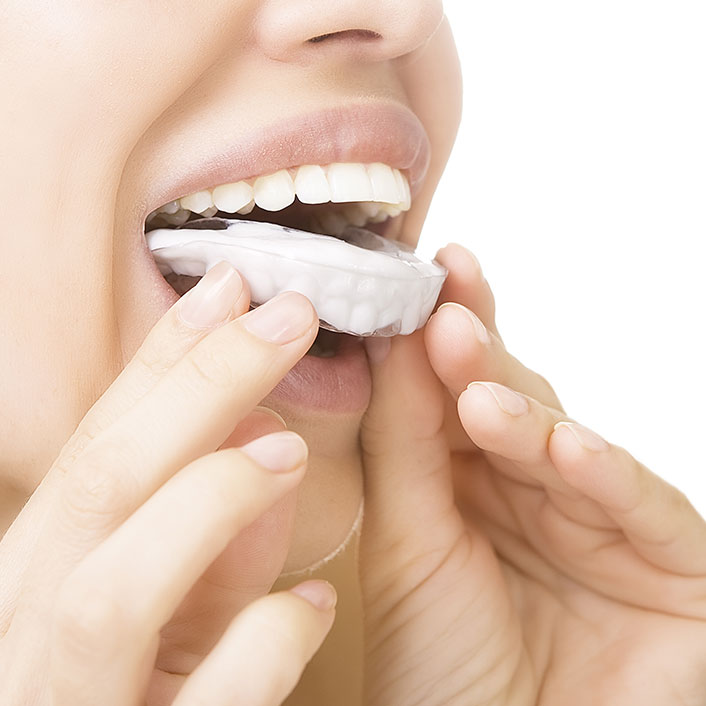
Night Guard
Teeth clenching and grinding can damage teeth and be harmful to one’s long-term oral health. Night guards are recommended to protect patients who clench or grind their teeth during the night. These custom-designed appliances can be used as part of treatment for a variety of disorders including bruxism and TMJD. They are made of durable plastic and molded to comfortably fit the shape of your teeth.
Custom-made oral appliances can also be used as part of treatment for conditions like sleep apnea and TMJ disorders. In general, plastic appliances can be used to correct a variety of problems.
If you clench or grind your teeth in the night or are experiencing any concerns about your mouth, teeth, or jaw, call us today. Let us help you determine if night guards are right for you.
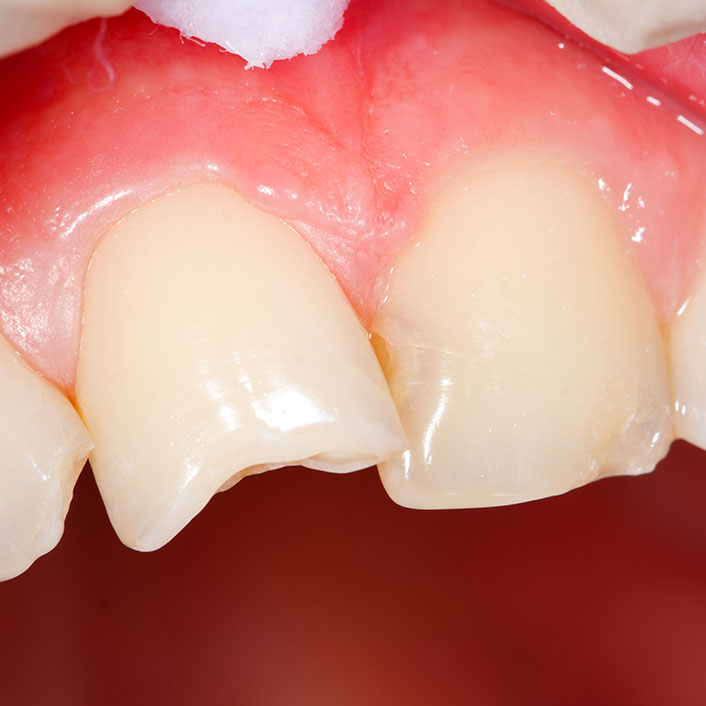
Bonding
Bonding is a conservative way to repair slightly-chipped, discolored or crooked teeth, often for cosmetic purposes. The process comprises placing a white filling on your tooth to improve its appearance. The filling "bonds" with your teeth, and because it comes in a variety of tooth-colored shades, it closely matches the appearance of your natural teeth.
Bonding can also be used in place of regular amalgam fillings. Many patients prefer bonded fillings, because the white color is much less noticeable than the silver of the amalgam fillings. Bonding fillings can be used on front and back teeth, depending on the location and extent of tooth decay.
Bonding is less expensive than other cosmetic treatments and can usually be completed in one visit to our office. However, bonding can stain and breaks more easily than other cosmetic treatments like porcelain veneers.
If your bonding does break or chip, please let us know. We can generally patch or repair bonding in one visit.

Snoring & Sleep Apnea
Snoring can be much more serious than it seems! More than just “so much noise” it may actually be a symptom of Obstructive Sleep Apnea (OSA). OSA happens when the tongue, jaw or even simply the weight of the neck causes the airway to be closed off. This results in the patient stopping breathing periodically through the night and can have severe impact on overall health over time. Both Snoring and Sleep Apnea are often successfully treated with custom dental appliances or CPAP, however, the involvement of a sleep specialist is required to ensure an accurate diagnosis if OSA is suspected.
Severe sleep apnea may also require the help of a sleep specialist. We will walk you through a thorough consultation process to help you decide on the very best option for your unique situation.
Potential health effects of untreated obstructive sleep apnea include:
- Drowsy Driving
- High Blood Pressure
- Increased Stroke Risk
- Weight Gain
People who are at a high risk for OSA may also have the following:
- Obesity BMO>35
- Type 2 diabetes
- History of stroke
- High blood pressure - more than 2 meds
- Pulmonary hypertension
Symptoms:
- Excessive daytime sleepiness
- Snoring
- Insomnia
- Nightmares
- Loud breathing during sleep
- Dry mouth or throat
- Headache
- Irritability
Please let us know if you are experiencing any of the above symptoms we can help you initiate the process with a simple evaluation and discussion of your concerns. If we believe that sleep apnea is a likely diagnosis we will help you meet a qualified sleep specialist conveniently located in our building for a complete and thorough evaluation of your airway and sleep patterns and presentation of your options. There are many ways of treating snoring or obstructive sleep apnea including dental appliances, which we are equipped to help you with, CPAP, and, in some severe cases, surgery. We will walk you through the consultation process and help you decide what is best for your unique situation.
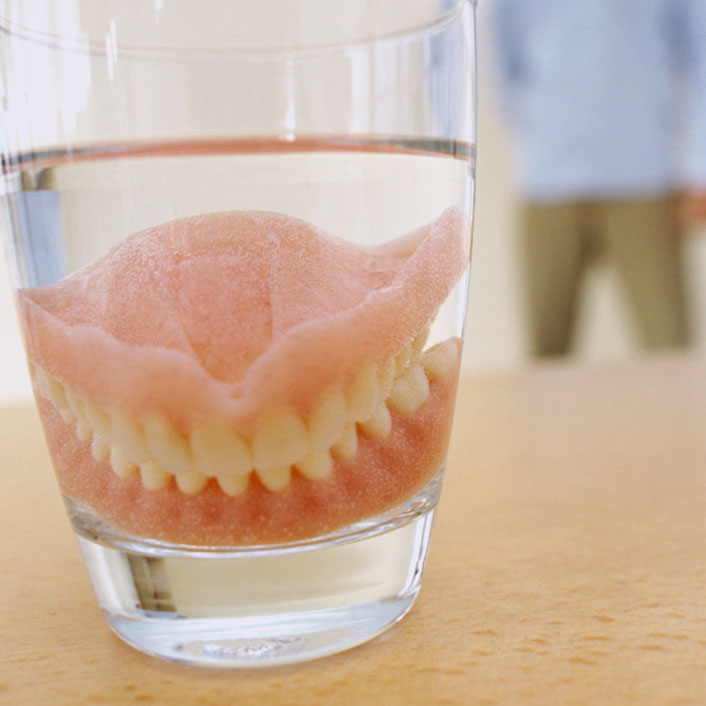
Overdentures
Overdentures, also known as implant-supported dentures, are dentures that are attached to implants in the jaw. An overdenture is used when a patient no longer has teeth remaining in their mouth but enough bone in their jaw to support implants. Overdentures snap into place on top of implants but can be removed for cleaning.
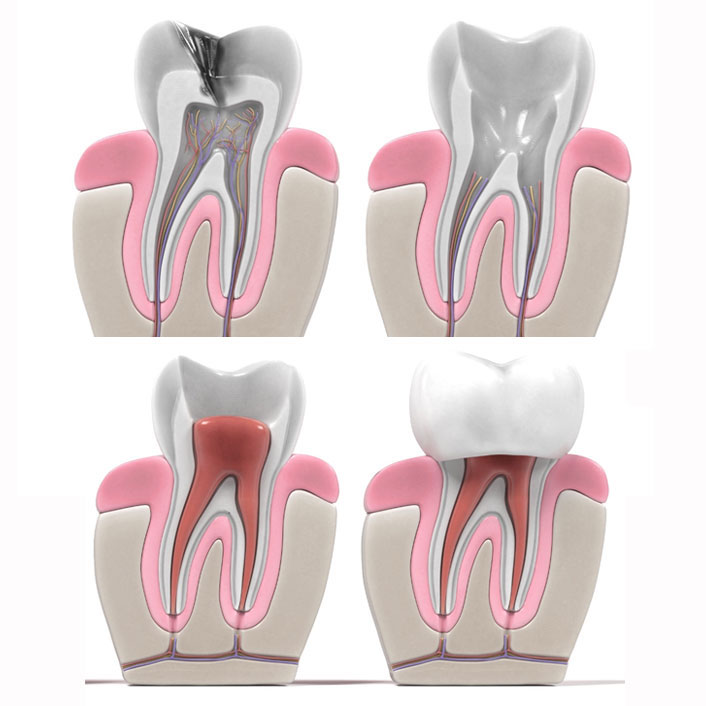
Root Canal
Root canal treatment, also referred to as root canal therapy or endodontic therapy, is used to save an infected or damaged tooth and avoid having to remove it. A root canal becomes necessary when a neglected cavity reaches all the way to the pulp at the center of the tooth, causing the pulp to become infected. Regular cleanings and checkups detect and prevent problems early on.
Trauma can also cause deep damage to the nerve of a tooth. Once this occurs, the pulp becomes infected, and it begins to eat away at the surrounding bone (this is called an abscess). By the time the pulp is infected it must be treated, and cannot heal on its own. It can even weaken the entire immune system, making it very dangerous and painful.
Symptoms of infected pulp may include sensitivity to hot/cold or sweets, pain, swelling, pain with biting or pressure, and a bad taste in the mouth. Sometimes, however, there are no symptoms, and you are unaware of any problem until a checkup.
A root canal is performed to clean out the infected tooth pulp and disinfect the canals of the tooth. The only other treatment would be to extract the tooth. Once the infection is resolved, the canal(s) is filled to prevent any further infection. Crowns are usually recommended to cover and restore a tooth after root canal therapy.
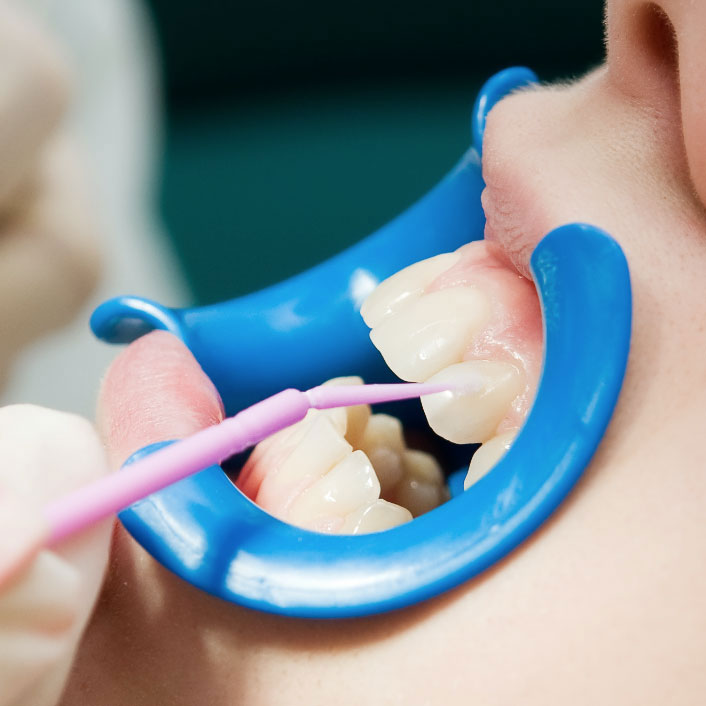
Sealants
Sealants are a common preventive treatment in dentistry. Some teeth have fine grooves or pits that accumulate plaque, not because the person doesn't brush, but because the grooves are too narrow to allow even one bristle into them. When plaque accumulates, it can lead to cavities and other types of tooth decay. To apply sealants, a plastic material is brushed onto the tooth, filling these narrow grooves and preventing the cavity-causing buildup. Sealants make healthy teeth possible.
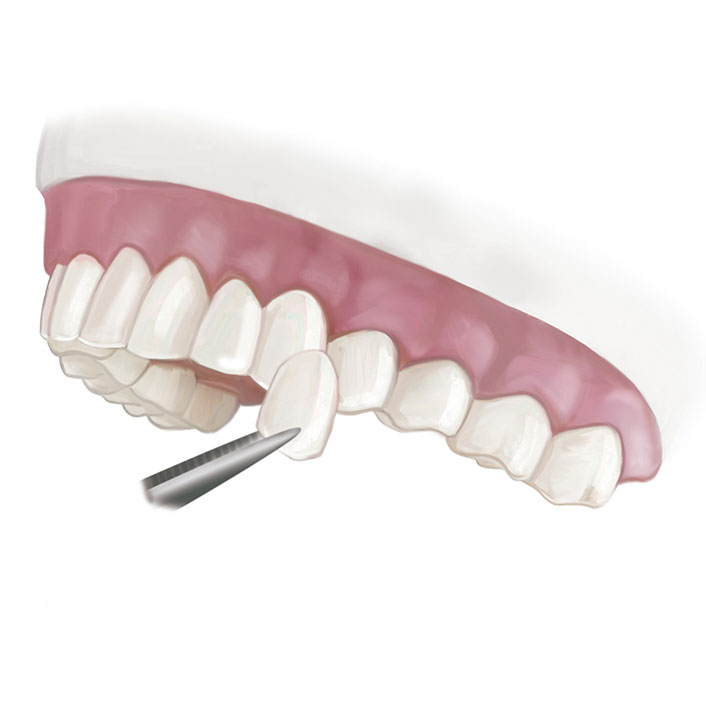
Veneers
Veneers are a cosmetic dental procedure in which a thin layer of porcelain or composite material is placed over the outside of the tooth. They are used to improve aesthetics or help with tooth damage. Veneers are usually only performed on the front part of the teeth that are visible when talking or smiling. The procedure can be direct or indirect.
The direct technique usually involves placing composite resin on the outside of the tooth using bonding. Because of that, the direct technique is usually referred to as bonding. The indirect technique usually involves two appointments because the veneers are fabricated at a dental laboratory. At the first appointment the teeth are prepared, impressions are taken, and the teeth are given a temporary covering. The veneers are back from the laboratory after two or three weeks. The temporaries are removed, and the veneers are bonded to the teeth.The laboratory-fabricated veneers are usually made using porcelain or pressed ceramic, and are aesthetically pleasing.
The advantage of veneers versus crowns is that much less of the tooth material has to be removed, and the procedure is generally less uncomfortable. Veneers are not recommended for patients who have large fillings or little tooth structure. They are also typically recommended for the restoration of front teeth.

Teeth Whitening
Teeth whitening is a popular procedure to make your teeth whiter and brighter, and therefore more attractive. Bleaching can be used to whiten stained and discolored teeth, or simply to enhance a dull smile. Either way, teeth whitening is a safe and relatively painless procedure for most patients. Whitening comes in strips, trays, or in-office procedures. We offer a wide variety of options for you at our practice.
In-office bleaching procedures are ideal if you want immediate results. The whole process takes about an hour, taking little time out of busy lives. A protective gel is applied to your gums to protect the soft tissue. Then a special light-activated gel is applied to your teeth and light or laser is used to enhance the action of the agent. Finally, the patient receives a take-home gel and instructions to keep the smile bright. The result is dramatically whiter teeth that will last for years.
Tray whitening is a less-expensive and convenient at-home whitening treatment. The results are more gradual. An impression is taken at the dentist’s office in order to create a customized clear tray. Trays are generally ready within a few days, depending, and the patient must follow instructions for how to apply the gel in the trays and how often to use it. Maximum whitening results and a dazzling smile are achieved at the end of the set treatment period. An occasional treatment can be used to maintain the new smile.
Whitening strips can be available at the local store or at dental practices. The dentist will have the best recommendations for your needs.
Ask about our whitening options! Please consult us about use of over-the-counter whitening treatments.
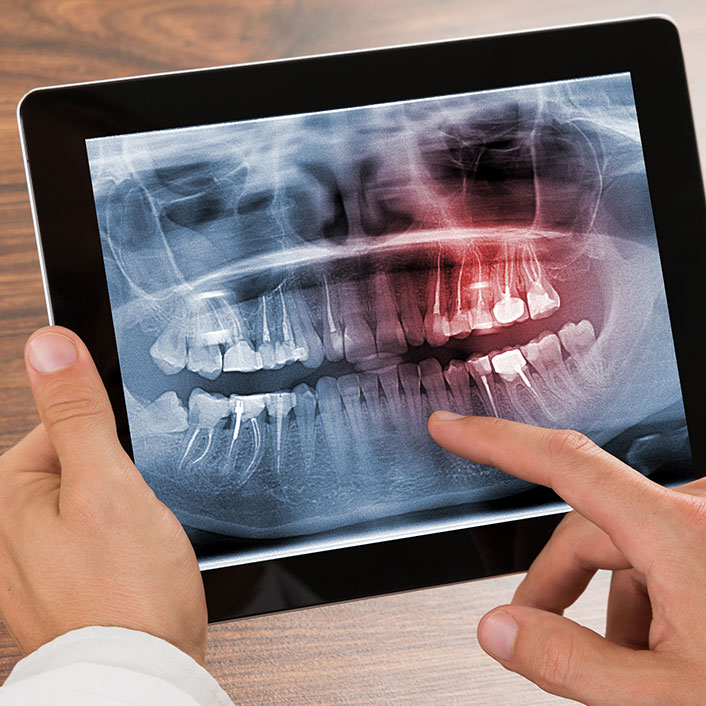
Digital X-rays
While we can view many aspects of your oral health with a visual examination, there are some structures inaccessible to the naked eye. That’s why x-rays are crucial to diagnosis and treatment. The x-rays we capture are instantly visible on a nearby monitor, and they can be magnified, color-coded and transferred digitally for patient convenience. They’re also safer for the environment and you with radiation exposure reduced by up to 90%.

Electronic Claims
Many offices utilize electronic claims processing. This means that rather than being sent through the mail, a dental claim is sent electronically to an insurance company with the click of a button. We can submit information more efficiently and with fewer errors. This benefits patients because the turn-around time on claims is faster, and fewer claims are returned or denied.
We are happy to submit your dental claims to your insurance company on your behalf. Please let us know if you have any questions about the e-claim process.
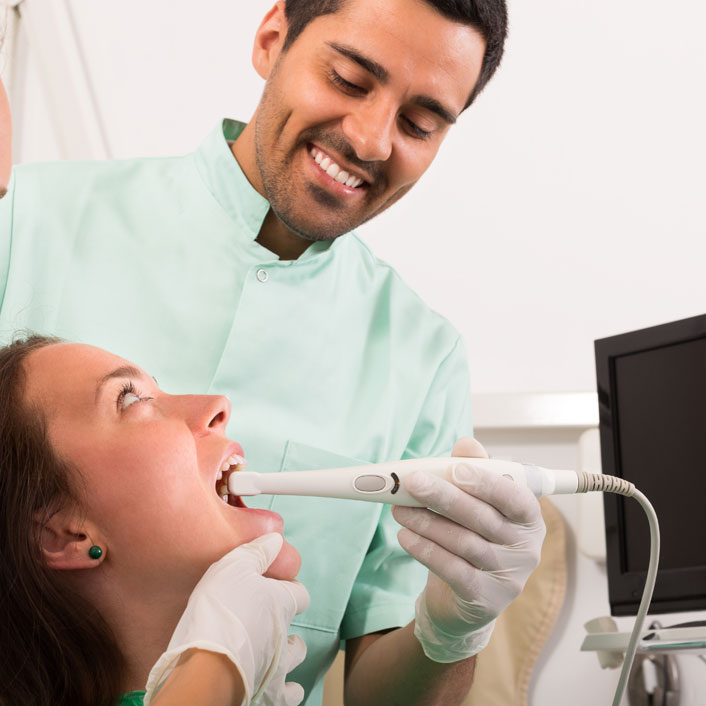
IntraOral Cameras
IntraOral cameras, cameras about the size of a pen, help dentists see the condition of teeth and gums more clearly. This advanced technology allows us to zoom in on small diseased areas, cracks, chips and worn metal fillings to provide a more detailed view. The full-color images are sent to a computer screen, making it easy to see and diagnose dental problems much earlier than with traditional dental technology. Patients are also able to watch the whole process because the images are displayed on screens in treatment rooms.
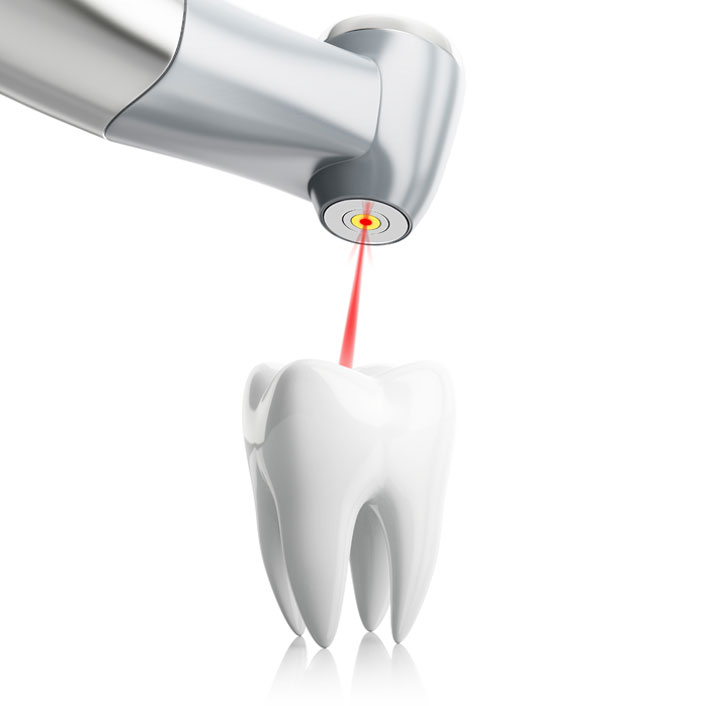
Laser Dentistry
Laser dentistry is an important advancement in dental technology, treating a wide range of dental and cosmetic problems from cavities to gum disease. Hard tissue lasers are used to repair cavities, remove old fillings and prepare teeth for bonding. Soft tissue lasers are used on gum tissue. They are an alternative to the common hand-held scalpel, drills, or other tools. Lasers can even be used for teeth whitening.
Laser dentistry works by directing an invisible energy beam on problem areas and allowing for efficient treatment of decayed teeth, enamel and gums. The biggest benefit of laser dentistry, by far, is that it can reduce pain and minimize use of anesthetic. Dental procedures can become much more comfortable for you! Dental lasers have been approved by the Food and Drug Administration and are safe for both adults and children.
If you ever have any questions about the equipment we use at our office to enhance the quality of your experience, don’t hesitate to ask.

Paperless Charting
Paperless charting means more efficiency and more accuracy. An office that has “gone digital” records x-rays and charting with the aid of the computer and keeps all patients’ dental records electronically. Additionally, it cuts back on paper use. With traditional paper charting, information can be lost in translation from doctor to hygienist to assistant. Even handwriting differences and coding make the charts look different. The computer eliminates this problem by standardizing charting methods, making it easy to understand dental charts, view up-to-date information and keep records accurately. When needed, this method also allows dental offices to more easily share information with other healthcare providers.
If you have any questions in regards to your records with us, please let us know.

Patient Education
You deserve to be in the loop when it comes to your dental care. There are a variety of computer programs available to help patients better understand conditions, procedures and treatment options. Our office invests in patient education software because we want you to feel confident in every dental decision you make. This investment helps us clearly communicate--and it helps you learn more.
Popular programs include GURU and DentalMaster, among many others. If you have any questions about the program we use, we’re happy to point you to the website. If you have any further questions about your oral health and procedures, don’t hesitate to ask us.
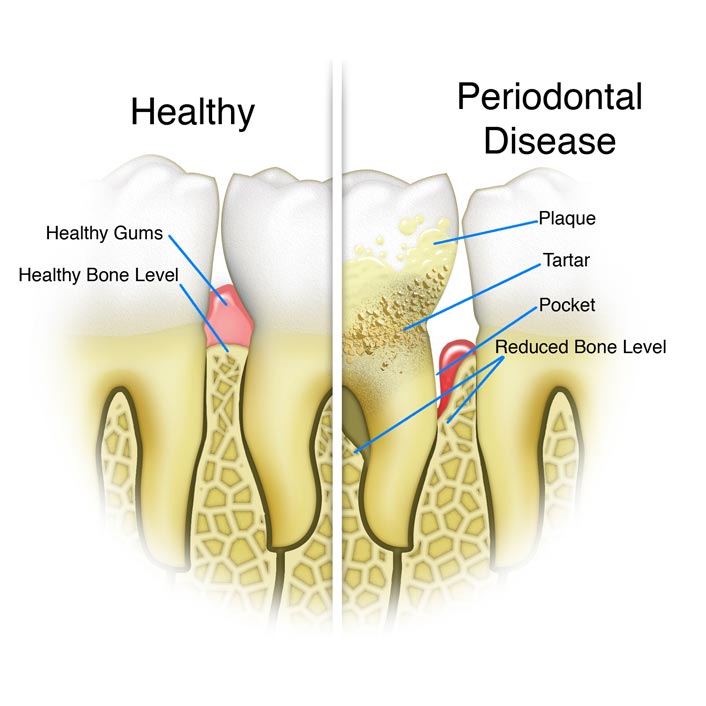
Gum (Periodontal) Treatment
It’s estimated that more than half of U.S. adults have gingivitis. Gingivitis, in some cases, can lead to periodontitis (gum disease) and host of other health problems.
Gum disease can cause bleeding, swelling, bad breath, pain, receding gums and tooth loss. But it doesn’t always stop there. You oral health is the beginning point for your whole body’s health and wellness. It is imperative that we stop problems before they even start!
Gum disease causes a buildup of bacteria in deep pockets between the teeth and gums. That bacteria can transfer to your bloodstream when gums bleed, putting you at a much higher risk to develop the following health problems:
- Stroke
- Respiratory Disease
- Heart Disease
- Diabetes
- Ulcers
- Osteoporosis
- Arthritis
- Pre-Term Births
Periodontal treatment typically involves containing the infection through deep cleaning like scaling and root planing, clearing buildup at the root of the teeth. The dentist may also suggest specific toothpastes and mouth rinses. We may also prescribe antibiotics to fight infections. Surgery is required for the most severe cases.
We examine you for gum health at every 6-month check-up. If you have been experiencing any symptoms like bad breath, bleeding or tender gums, please let us know. We will decide what is the best form of treatment to restore your gums to optimum health.

Sedation
Nitrous Oxide Sedation
Nitrous oxide sedation, also known as "laughing gas," is commonly used to make treatment more comfortable. The nitrous oxide is inhaled through a mask and produces a state of relaxation. Local anesthetic will be administered in conjunction with nitrous oxide to eliminate pain. Nitrous oxide is designed to make procedures easier for nervous patients and has been effective for many years.
IV Sedation
A variety of forms of dental sedation are used to help patients who suffer from dental anxiety or phobia. There are multiple levels of sedation to ease every level of anxiety, and IV sedation is the perfect option for patients who might otherwise avoid the dentist.
IV sedation is commonly referred to as “sleep dentistry--” it will be as if you fell asleep, and you won’t remember the procedure. A specific set of drugs are administered via IV for the duration of the procedure or procedures, and you will be carefully monitored to ensure your safety. Often reserved for oral surgery, IV sedation is also available to those with intense dental anxiety and phobia. It makes dentistry easy.
If you feel that IV sedation is the best option for you, set up a consultation today! We are happy to answer any of your questions.